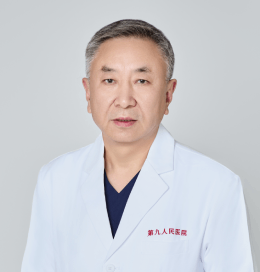
Wei LIU, MD, PhD.
Building up multi-level defense strategy for post-surgical keloid recurrence.
Department of Plastic and Reconstructive Surgery, Shanghai Ninth People’s Hospital, Shanghai Jiao Tong University School of Medicine
Background: Despite different therapies applied for the treatment, it remains difficult to completely control keloid recurrence. This is likely due to the misled concept of considering it as a pure skin disease, and the relying on single topical therapy such as radiotherapy. Methods: Since 10 years ago, a multi-level defense system has been applied by our group to significantly reduce post-surgical recurrence rate via integrating multiple-level therapies including:
(1) systemic treatment of keloid constitution with small chemical compound and Traditional Chinese Medicine as well as proper adjustment of life style and diet manner;
(2) drug treatment during surgical operation such as 5-FU and steroid for fresh wound management;
(3) effective anti-tension procedure during and post-surgery including anti-tension suturing and anti-tension device;
(4) post-surgical drug injection mainly using 5-FU;
(5) post-surgical pressure therapy;
(6) post-surgical laser therapy. Results: Using this defense strategy, our team has significantly reduced the keloid recurrence rate via controlling the recurrence at very early stage. Thereby, keloid relapse only occurred in a few patients who did not follow the guideline, such as no proper treatment of early recurrence sign or no follow-up visit until significant enlargement of reoccurred keloid. Conclusion: This presentation introduce an effect strategy for post-surgical keloid recurrence. The most important concept for this strategy is the proper and prompt treatment of any early sign of recurrence like itching, sting and erythema. In addition, it is also improper to initiate therapy until the physical formation of recurrent keloid or waiting for the enlargement of recurred keloid.
Use of biopsy punch procedure to treat wide-spread keloids
Department of Plastic and Reconstructive Surgery, Shanghai Ninth People’s Hospital, Shanghai Jiao Tong University School of Medicine
Background: Multiple spreading keloids over whole body represents a difficult challenge to physicians because surgical operation is not possible for wound coverage and drug injection is also not feasible considering sever side effect resulting from large area treatment. Methods: Biopsy punch was originally used for harvesting pathological tissue sample and the punch hole could be spontaneously healed via tissue regeneration. Because of this unique advantage, it has been commonly used for keloid treatment in China. Results: From mechanistic point of view, this procedure can significantly debulk the pathological tissue volume and thus significantly reducing symptoms of itching and sting via reducing paracrine production of pathological factors. In addition, it also efficiently disrupts the vascular network of keloid tissue, and thus help to control keloid development of recurrence. The punch diameter and the distance between the hole are the key parameters for achieving proper therapeutic results. In general, the thicker of the tissue, the bigger of punch diameter should be applied, and distance between holes similar to the hole diameter should be applied to control the proper hole density. To achieve rapid debulking, a denser punch procedure should be applied. In addition, post-surgical radiotherapy and laser therapy can be combined to effectively control the recurrence. Conclusion: This talk will present the application of this procedure for spreading keloids in the area of chest, back, extremity and mandibular regions, which demonstrates a feasible way of spreading keloid treatment.

